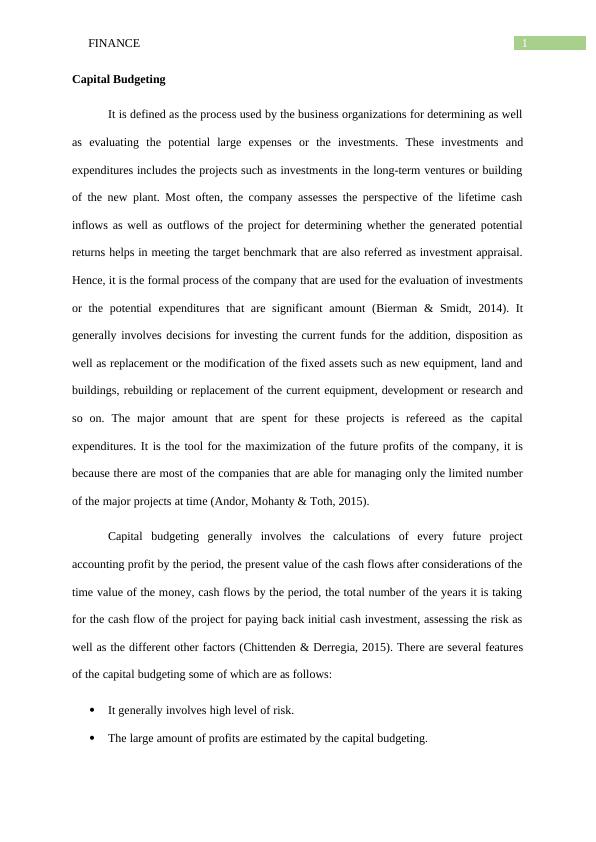Capital Budgeting: Process, Decisions, and Methods
11 Pages2803 Words97 Views
Added on 2022-12-28
About This Document
This article provides an overview of capital budgeting, including the process, decisions, and methods involved. It explains how businesses evaluate potential investments and make informed decisions to maximize profits. The article also discusses various techniques used in capital budgeting, such as payback period, accounting rate of return, net present value, internal rate of return, and profitability index.
Capital Budgeting: Process, Decisions, and Methods
Added on 2022-12-28
ShareRelated Documents
End of preview
Want to access all the pages? Upload your documents or become a member.
Financial Analysis and Management: Techniques of Investment Appraisal Process
|19
|4613
|428
Financial Decision Making: A Case Study of Costco Wholesale
|5
|1011
|71
Evaluation Methods for Investment Decision Making - Business Case Study 2
|7
|1513
|465
Capital Budgeting Techniques
|12
|2511
|347
Finance for Managers | Analysis
|11
|3230
|225
Capital Budgeting Process: A Case Study Analysis
|9
|2068
|469




